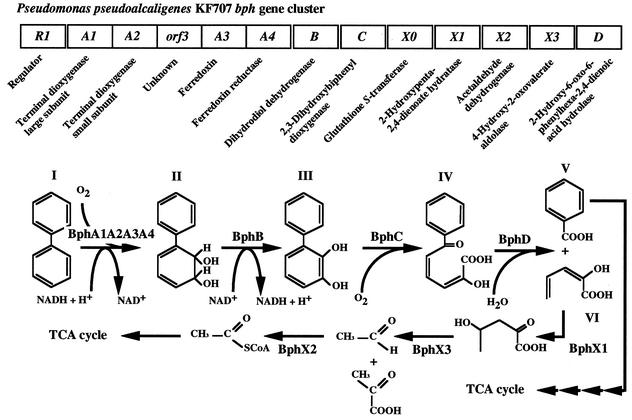FIG. 1.
Catabolic pathway for degradation of biphenyl and organization of the bph gene cluster in P. pseudoalcaligenes KF707. Compounds: I, biphenyl; II, 2,3-dihydroxy-4-phenylhexa-4,6-diene (dihydrodiol compound); III, 2,3-dihydroxybiphenyl; IV, HOPD (the biphenyl meta-cleavage compound); V, benzoic acid; VI, 2-hydroxypenta-2,4-dienoic acid. Enzymes: BphA1A2A3A4, biphenyl dioxygenases; BphB, dihydrodiol dehydrogenase; BphC, 2,3-dihydroxybiphenyl dioxygenase; BphX0, glutathione S-transferase; BphX1, 2-hydroxypenta-2,4-dienoate hydratase; BphX2, acetaldehyde dehydrogenase (acylating); BphX3, 4-hydroxy-2-oxovalerate aldolase; BphD, 2-hydroxy-6-oxo-6-phenylhexa-2,4-dieonic acid hydrolase. The BphR1 (formerly Orf0) protein, which belongs to the GntR family, is a transcriptional regulator involved in the expression of bphR1 and bphX0X1X2X3D (41). The function of orf3 remains unclear. TCA, tricarboxylic acid.

